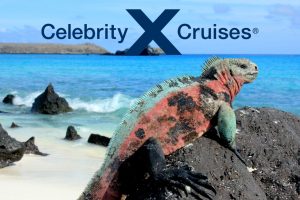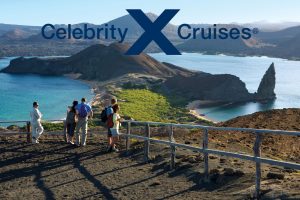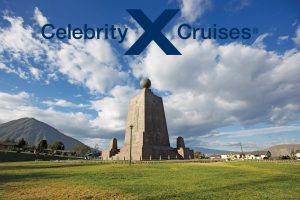Galapagos Inner Loop Cruise Itinerary
Day 1 – Baltra Island
During World War II, Baltra served as a U.S. military base protecting the Panama Canal from enemy attack. Now the cactus-strewn landscapes of Baltra are home to the region’s main airport.
Day 2 – Egas Port and Rabida Island
With its black sand beach, coastal tide pools, and blue-water grottoes, this stop offers a wonderful taste of the Galapagos and the opportunity to see shore birds, Galapagos Hawks, sea lions, marine iguanas, and Galapagos fur seals. Sea lions, colorful tropical fish, and sea turtles are often seen while snorkeling.
A small island south of Santiago, Rabida is best known for its red sand and eroded volcanic landscape. A nesting colony of pelicans makes its home here, along with sea lions and some sea birds.
Day 3 – Elizabeth Bay and Tagus Cove
Elizabeth Bay is one of the westernmost points in the Galapagos. A scenic zodiac ride within this sheltered inlet offers viewing of a wide variety of wildlife and a wonderful mangrove ecosystem.
Historically an anchorage for pirates and whalers, this site offers a breathtaking view of Isabela, its volcanoes and spectacular Darwin Lake. Along the shore, seabirds, penguins, sea lions, sea turtles, and nesting flightless cormorants can often be found.
Day 4 – Sullivan bay and Bartolome Island
During a volcanic eruption in the early 1900’s, this area of Santiago was covered with flowing lava. Today, the hardened fields of black rock create a geologic wonderland. We will take advantage of the cool of early morning for awalk to view strange twisting hardened lava flows, collapse craters, and everyone’s favorite, the hornitos orlava ovens. Tall red scoria cones and pioneer plants also dot this unusual and very young landscape.
Bartolome Island hosts one of the region’s most often-photographed views and a spectacular geologic setting. Its barren moon-like volcanic landscapes, spatter cones, and pinnacle rock make for a unique stop. It is also home to the endemic Galapagos penguin and provides an excellent opportunity for snorkeling.
Day 5 – Las Bachas, Daphne Major and North Seymour Island
A beautiful white sand beach on the northern coast of Santa Cruz Island. The name “Las Bachas” comes from the mispronunciation of the word “barges” by the local population during the 1950s when WWII barges broke their moorings and ran aground on the beach. This is also one of the largest nesting areas of the Pacific Green Sea Turtle in the Galapagos. A short beach walk brings you to a pond to look for flamingos and other shorebirds.
Daphne is a satellite volcanic cone located north of Santa Cruz Island. The crater floor is an important breeding site for blue-footed boobies. The cliff shore of the island is home for sea lions, pelicans, blue-footed boobies, and tropical birds which can be observed during the circumnavigation of the island.
North Seymour is a small island just north of Baltra. It is home to the largest colony of frigate birds in the Galapagos. While keeping an eye out for male frigates trying to impress potential mates with an inflated red neck pouch, you may also see blue-footed boobies dancing in a timeless courtship ritual. Sea lions and large land iguanas also roam about this rocky terrain. Excursion options include a guided long, rocky walk, zodiac ride and short easy walk, or simply just a scenic zodiac tour along the coast to view wildlife and the geology of the area.
Day 6 – Puerto Baquerizo Moreno and Punta Pitt
Here we have the opportunity to visit the small waterfront town of Puerto Baquerizo, the administrative capital of the islands. Excursion options include a tour of a local interpretation center and time for shopping or a fast-paced long walk to view scenic vistas, followed by a visit to the interpretation center.
Pitt Point is located on the northeastern tip of San Cristobal Island. After disembarking onto the small greensand beach, you’ll hike up to a plateau, where the view and landscape are so spectacular it is well worth the effort. A steep gully leads up the cliff to a breeding ground for all three varieties of boobies: red-footed, blue-footed, and Nazca. It’s one of the few places in the Galapagos where you can see all three species nesting together.
Day 7 – Puerto Ayora, Santa Cruz Island
This is the main population center of the islands, and home to the National Park Service tortoise-breeding center and the Charles Darwin Research Station. You will be able to visit the tortoise-breeding center and walk through the Charles Darwin Research Station.
Day 8 – Baltra Island
Enjoy Baltra island for a few hours before flying back to Ireland.






